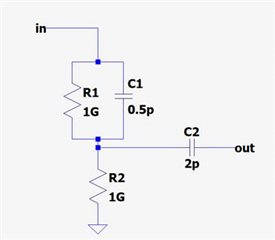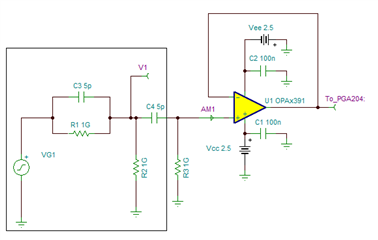Other Parts Discussed in Thread: OPA391, LMC660, LMP7721, OPA3S328
I am attempting to use the PGA204 Instrumentation amplifier as a unity gain buffer between a high source impedance and an NI-DAQ, but have so far been unable to collect a reasonable measurement. I have attached a schematic of my circuit below. The Input is ~100mV, C1=5p, C2=5p, the output is being fed to the input terminal on the PGA204. I am hoping to be able to resolve a small change (1-5%) in the input voltage. Can somebody please advise the proper configuration of the PGA204 for this purpose? In particular, what are appropriate values for the input bias current resistors?





